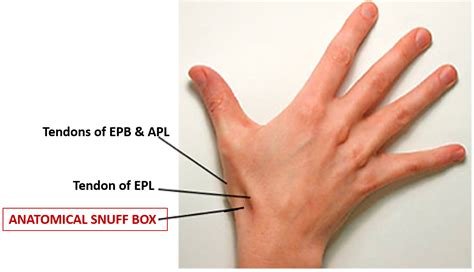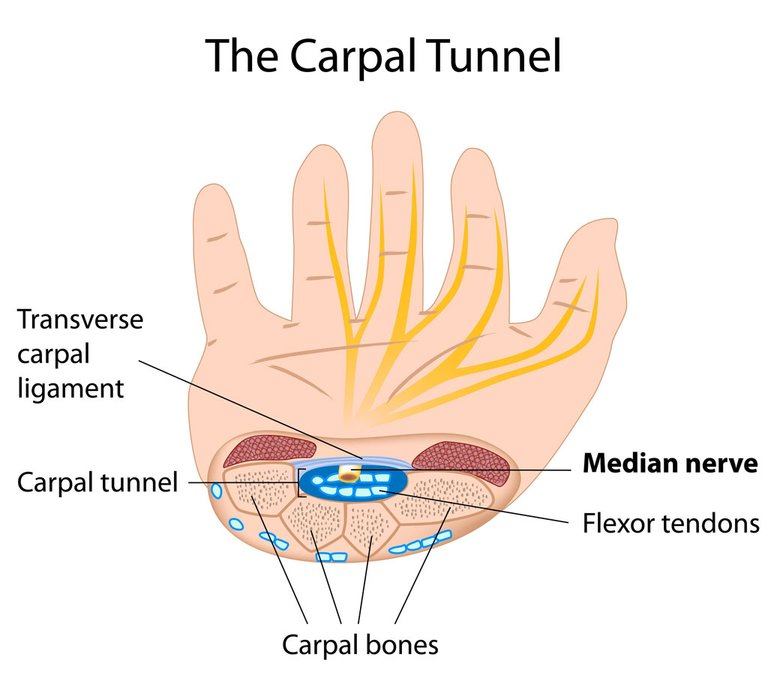Hive Medical Trivie: Weekend Wrapup

A big thank you to everyone who stayed around and participated in the hive medical trivias in the last 2 weeks, We are gradually increasing the intensity and bringing in more detailed and educating questions.
The human hand is a marvel of evolution—delicate yet strong, precise yet versatile. But with its complexity comes vulnerability to injury and disease. In this post, we’ll walk through the set of clinical quiz questions about hand anatomy, nerve lesions, and rheumatoid arthritis (RA), explaining not only the correct answers but also why the other options don’t quite fit.
A cyclist falls on an outstretched hand and complains of pain over the anatomical snuffbox. Which bone is most likely fractured? Options:
A) Hamate
B) Lunate
C) Trapezium
D) Scaphoid
✅ Correct Answer: D) Scaphoid
Explanation: The scaphoid bone lies in the anatomical snuffbox and is the most commonly fractured carpal bone following a fall on an outstretched hand (FOOSH). Pain in the snuffbox is a classical sign of a scaphoid fracture.
Why not the others?
Hamate: Fractures are associated with trauma involving sports like golf or baseball; pain is felt on the ulnar side.
Lunate: More commonly dislocated than fractured; not typically tender at the snuffbox.
Trapezium: Less commonly fractured and not typically the bone affected in FOOSH injuries.
A man feels numbness in the skin of his palm, thumb, and first two fingers—but the numbness spares the back of his hand. Where is the lesion most likely? Options:
A) Carpal tunnel
B) Cubital tunnel
C) Brachial plexus
D) Scaphoid fracture
✅ Correct Answer: A) Carpal tunnel
Explanation: The carpal tunnel is a tunnel where all the muscles and nerves supplying the palm of the hand have to pass through. It is not an elastic space and anything that increases the pressure in that small tunnel can compress the nerve and tendons. That is what happens with carpal tunnel syndrome. Carpal tunnel syndrome affects the median nerve, which is the nerve that supplies sensation to the palm, thumb, index, and middle fingers. The dorsal (back) aspect of the hand is spared because the sensory branch to the dorsum exits before the nerve enters the carpal tunnel.
Why not the others?
Cubital tunnel: Involves the ulnar nerve—affecting the ring and little fingers.
Brachial plexus: Would cause more widespread and mixed motor/sensory issues across the arm.
Scaphoid fracture: Causes pain and potential avascular necrosis but not median nerve symptoms.
After a mid-shaft humerus fracture, a patient can't extend their wrist and fingers, leading to a "wrist drop." Which nerve is injured? Options:
A) Radial nerve
B) Median nerve
C) Ulnar nerve
D) Musculocutaneous nerve
✅ Correct Answer: A) Radial nerve
Explanation: The radial nerve goes around the humerus in the spiral groove and is commonly injured in mid-shaft humeral fractures. It innervates the wrist and finger extensors—hence wrist drop.

Why not the others?
Median nerve: Affects thumb opposition and forearm pronation, not wrist extension.
Ulnar nerve: Affects fine hand movements and finger abduction.
Musculocutaneous nerve: Controls elbow flexion, not wrist or finger extension.
How many small bones (phalanges) are there in one hand? Options:
A) 7
B) 10
C) 14
D) 5
✅ Correct Answer: C) 14
Explanation: Each finger has 3 phalanges (proximal, middle, distal), except the thumb, which has 2. That totals 14 phalanges per hand (3×4 fingers + 2 for the thumb).
Why not the others?
7: Incorrect, perhaps confusion with number of carpal bones.
10: Too few.
5: This would imply only one per finger, which is inaccurate.
Jenny is trying to open a tight jar lid. She mainly uses the muscles in her forearm and palm to do this. Which part of the hand helps her grip strongly? Options:
A) Flexor muscles
B) Extensor muscles
C) Flexor retinaculum
D) Cartilage
✅ Correct Answer: A) Flexor muscles
Explanation: Flexor muscles in the forearm and hand provide the gripping force needed to close the hand around objects. These muscles contract to flex the fingers and thumb.
Why not the others?
Extensor muscles: Extend the fingers; they open the hand, not close it.
Flexor retinaculum: A connective tissue band, not responsible for producing force.
Cartilage: Provides cushioning in joints; not involved in muscle movement.
Which body part besides joints can RA sometimes affect? Options:
A) Lungs
B) Hair
C) Teeth
D) Eyesight only
✅ Correct Answer: A) Lungs
Explanation: Rheumatoid arthritis (RA) is a systemic inflammatory disease that can also affect the lungs, causing interstitial lung disease.
Why not the others?
Hair: May fall due to medication (e.g., methotrexate) but not directly affected by RA.
Teeth: Not directly affected by RA.
Eyesight only: RA can affect the eyes (e.g., scleritis), but it's not limited to eyesight alone.
If RA is not treated early, what may happen to the joints? Options:
A) They turn blue and shiny
B) They get stronger and harder
C) They may become permanently damaged and deformed
D) They grow bigger and larger
✅ Correct Answer: C) They may become permanently damaged and deformed
Explanation: Without proper treatment, RA leads to chronic inflammation, causing joint erosion, deformity, and functional disability. Common deformities include swan neck and boutonnière deformities.
Why not the others?
Blue and shiny: Suggests vascular issues, not RA.
Stronger and harder: Inflammatory destruction makes joints weaker.
Grow bigger: May appear swollen but not actually larger or stronger.
Maria is 50 and wakes up with stiff fingers that take more than an hour to loosen up. She also feels tired and achy. What condition does this most likely suggest? Options:
A) Rheumatoid arthritis
B) Osteoarthritis
C) Gout
D) Carpal tunnel syndrome
✅ Correct Answer: A) Rheumatoid arthritis
Explanation: Morning stiffness >1 hour, symmetrical joint pain, and fatigue are classical features of rheumatoid arthritis. It’s autoimmune and inflammatory in nature.
Why not the others?
Osteoarthritis: Causes stiffness too, but usually <30 minutes in the morning.
Gout: Typically sudden onset, very painful, and affects one joint (often the big toe).
Carpal tunnel: Causes tingling and numbness, not generalized stiffness.
Final Thoughts From fractures and nerve damage to autoimmune joint destruction, the hand is a window into many medical conditions. Understanding the subtle distinctions in symptoms—like where numbness occurs or how long stiffness lasts—can mean the difference between early treatment and long-term damage.
By using these quiz questions as anchors, we've explored a wide range of clinical pearls. Whether you're a student, a healthcare worker, or just a curious learner, remembering these principles could help you better understand both the elegance and the vulnerabilities of the human body.
Till we meet next week. Stay healthy.




By adding #bilpcoin or #bpc to original posts, you can earn BPC tokens

https://peakd.com/hive-140084/@bpcvoter1/my-way-keni-bpc-ai-music
https://peakd.com/hive-126152/@bpcvoter2/dear-themarkymark-buildawhale-gogreenbuddy-usainvote-ipromote-and-whoever-else-is-involved-in-this-scheme-you-call-us-nutty-as
https://peakd.com/hive-167922/@bilpcoinbpc/exploring-the-possibilities-of-ai-art-with-bilpcoin-nfts-episode-102-buildawhale-scam-farm-on-hive-and-dear-steevc
https://peakd.com/hive-133987/@bilpcoinbpc/comprehensive-analysis-of-punkteam-s-wallet-transactions
https://hive.blog/hive-163521/@bpcvoter1/deep-dive-into-meritocracy-s-activity-history-and-blockchain-audit
https://www.publish0x.com/the-dark-side-of-hive/to-downvoters-scammers-and-farmers-on-hive-the-time-to-chang-xmjzrmp
https://peakd.com/hive-163521/@bpcvoter3/themarkymark-we-ve-exposed-your-actions-repeatedly-how-you-and-your-army-of-bots-manipulate-rewards-to-benefit-yourselves-it-s
https://peakd.com/hive-168088/@bpcvoter3/the-shadow-matrix-a-tale-of-deceit-and-reckoning
Decentralization isn’t just a feature—it’s a fight. Let’s model fairness, rally allies, and pressure Hive to live up to its ideals.
https://peakd.com/hive-167922/@bpcvoter3/5m1kft-themarkymark-you-can-keep-pretending-to-be-oblivious-but-the-truth-is-out-you-ve-been-exposed-it-s-time-to-own-up-to-your
#StandForDecentralization #HiveTransparency
Thanks Dr for the detail sharing as always!